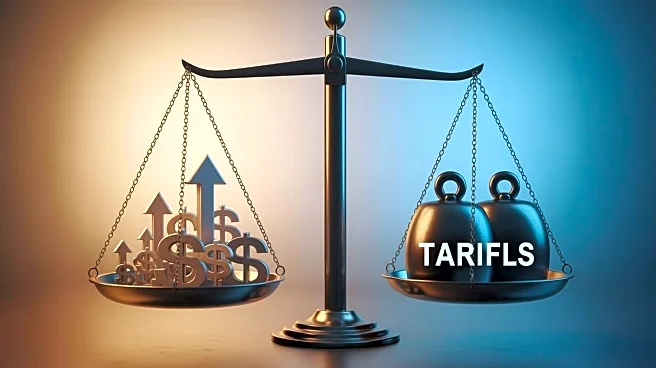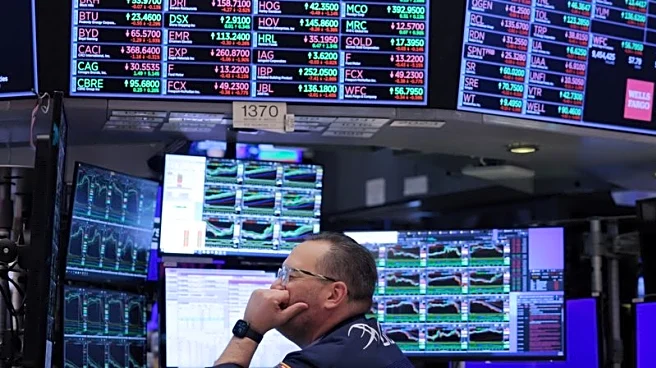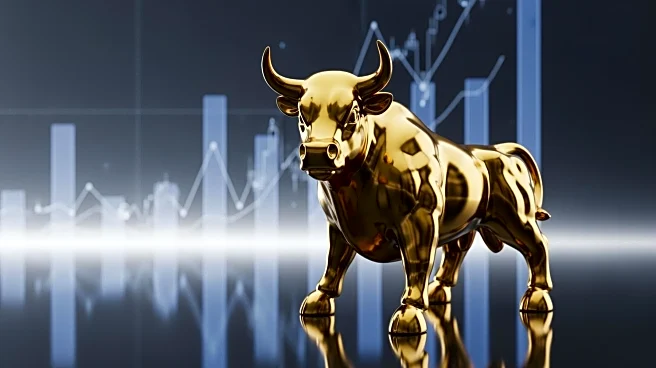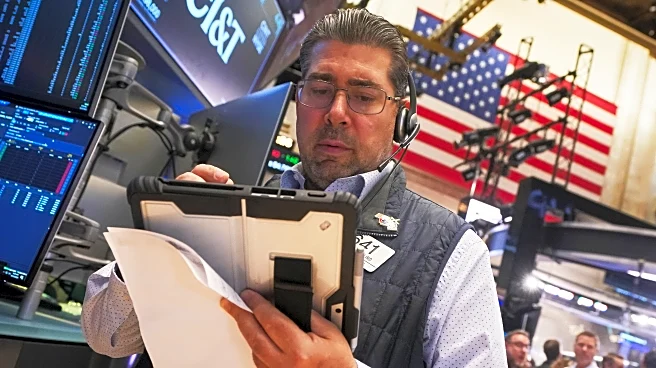What's Happening?
The latest inflation report, delayed due to a government shutdown, indicates that U.S. consumer prices increased in September for the second consecutive month. This rise is attributed in part to tariffs
imposed by President Trump, which have elevated the cost of groceries and other goods. The report, crucial for setting the annual cost-of-living adjustment for approximately 70 million Social Security recipients, shows a 3.1% increase in inflation from the previous year, up from 2.9% in August. Core inflation, excluding food and energy, remained steady at 3.1% for the third month. The Federal Reserve is expected to cut its key interest rate again, despite inflation concerns, to support the economy amid weakening hiring trends.
Why It's Important?
The inflation increase has significant implications for U.S. consumers and the broader economy. Rising prices, particularly for essentials like groceries, are a major stressor for many Americans. The tariffs, while initially feared to cause a more substantial inflation spike, have led to a one-time price increase that may persist if new tariffs are introduced. The Federal Reserve's decision to lower interest rates aims to stimulate economic growth but carries the risk of further inflationary pressure. Additionally, the tariffs have sparked political and economic debates, with President Trump considering measures like importing Argentine beef to mitigate high domestic prices, which has upset U.S. cattle ranchers.
What's Next?
The Federal Reserve is likely to proceed with another interest rate cut in its upcoming meeting, aiming to bolster the economy. However, ongoing tariff investigations, such as potential 100% tariffs on Nicaraguan imports, could further impact prices. Businesses reliant on imports, like the chocolate maker French Broad, face increased costs due to these tariffs, affecting their operations and pricing strategies. The economic landscape remains uncertain, with potential policy shifts and international trade negotiations influencing future inflation trends.













